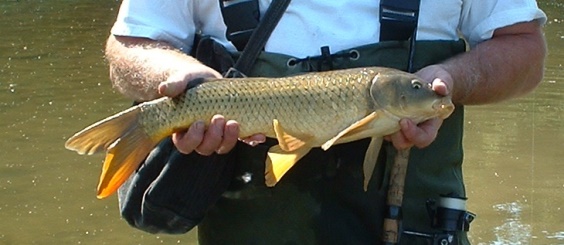Invasive Species Awareness Week: February 26 – March 3, 2024
Next to habitat loss, the spread of non-native, invasive species is one of the top problems causing environmental decline in our land and water ecosystems. Whether they are invasive plants, tree pests, fish, mussels, animals, or insects, they all threaten native species.
There are many introduced or non-native species that have been brought into Ontario from around the world, either purposely or accidentally. Only some of these are termed “invasive”, meaning they are particularly problematic as they establish themselves quickly and disrupt established ecosystems, forcing out native species. The invasive species arrive without the pests that co-evolved with them in their places of origin, so they can spread unchecked.

Buckthorn
Locally problematic plants include buckthorns, Phragmites, Japanese Knotweed, garlic mustard, and dog-strangling vine. Another big concern are invasive insects and tree diseases such as oak wilt, emerald ash borer, and beech bark disease that are affecting our natural hardwood forests. Aquatic ecosystems are impacted by species such as carp, goldfish, round Gobi, zebra mussels, as well as red eared sliders (turtles). These aquatic species can alter the environment by changing water clarity and out-reproducing native species in our ponds, streams, and lakes.

Common carp
Controlling invasive species requires knowledge and resources, so it is important to prioritize efforts. Some plants can be manually pulled from the ground, while others require specific herbicides to be effective at a large scale. The Upper Thames River Conservation Authority (UTRCA) and its partners has been involved in invasive species control and monitoring for many years. Here are some examples of efforts the UTRCA has been involved in over the last few years:
- Spraying Japanese knotweed in the Town of Mitchell for the Municipality of West Perth
- Treating and removing Phragmites and buckthorns in London’s Environmentally Significant Areas and Fanshawe Conservation Area
- Monitoring our aquatic systems for invasive fish species
- Researching and studying the effects of tree diseases and insect pests (e.g., oak wild and emerald ash borer) in our watershed
- Invasive species iNaturalist project
- Being on alert for new pests and invasive plants entering the region
The public can help by not purchasing invasive non-native plants for their gardens (see the Grow Me Instead guide by Ontario Invasive Plant Council), removing them from their properties, and supporting community efforts (e.g., buckthorn busting days) to control them in public natural areas. There are factsheets on the UTRCA website on how to control some of these species. Also, check out: ontarioinvasiveplants.ca and invasivespeciescentre.ca

